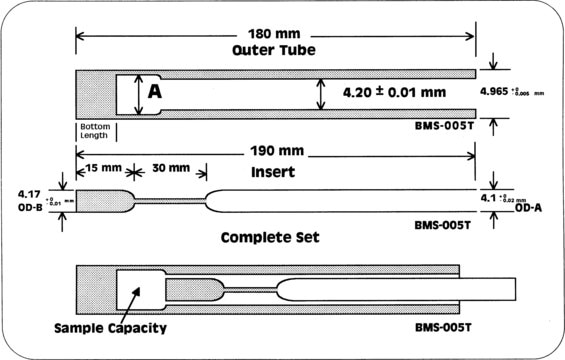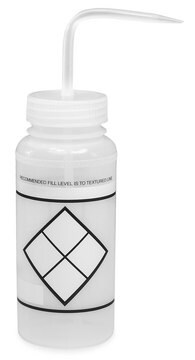721964
Methanol solution
NMR reference standard, 4% in methanol-d4 (99.8 atom % D), NMR tube size 5 mm × 8 in.
Autenticatiper visualizzare i prezzi riservati alla tua organizzazione & contrattuali
About This Item
Formula empirica (notazione di Hill):
CH4O
Numero CAS:
Peso molecolare:
32.04
Beilstein:
3662861
Numero MDL:
Codice UNSPSC:
41116107
ID PubChem:
NACRES:
NA.12
Prodotti consigliati
Grado
NMR reference standard
Concentrazione
4% in methanol-d4 (99.8 atom % D)
tecniche
NMR: suitable
Misura tubo NMR
5 mm × 8 in.
Formato
single component solution
Stringa SMILE
CO
InChI
1S/CH4O/c1-2/h2H,1H3
OKKJLVBELUTLKV-UHFFFAOYSA-N
Cerchi prodotti simili? Visita Guida al confronto tra prodotti
Caratteristiche e vantaggi
Low temperature callibration
Quantità
5 mm O.D. tube contains 0.700 mL.
Avvertenze
Danger
Indicazioni di pericolo
Consigli di prudenza
Classi di pericolo
Acute Tox. 3 Dermal - Acute Tox. 3 Inhalation - Acute Tox. 3 Oral - Flam. Liq. 2 - STOT SE 1
Codice della classe di stoccaggio
3 - Flammable liquids
Classe di pericolosità dell'acqua (WGK)
WGK 2
Punto d’infiammabilità (°F)
51.8 °F - closed cup
Punto d’infiammabilità (°C)
11 °C - closed cup
Scegli una delle versioni più recenti:
Possiedi già questo prodotto?
I documenti relativi ai prodotti acquistati recentemente sono disponibili nell’Archivio dei documenti.
I clienti hanno visto anche
Mathias Schmelcher et al.
The Journal of antimicrobial chemotherapy, 70(5), 1453-1465 (2015-01-30)
In the light of increasing drug resistance in Staphylococcus aureus, bacteriophage endolysins [peptidoglycan hydrolases (PGHs)] have been suggested as promising antimicrobial agents. The aim of this study was to determine the antimicrobial activity of nine enzymes representing unique homology groups
Kentaro Fujiwara et al.
EJNMMI research, 4, 29-29 (2014-07-10)
ROBO1 is a membrane protein that functions in axon guidance. ROBO1 contributes to tumour metastasis and angiogenesis and may have potential as a target protein of immunotherapy because ROBO1 is specifically expressed at high levels in hepatocellular carcinoma. In this
Haruka Oda et al.
Biomaterials, 56, 86-91 (2015-05-03)
A large number of lineage-committed progenitor cells are required for advanced regenerative medicine based on cell engineering. Due to their ability to differentiate into multiple cells lines, multipotent stem cells have emerged as a vital source for generating transplantable cells
Timo Heidt et al.
Circulation research, 115(2), 284-295 (2014-05-03)
Macrophages populate the steady-state myocardium. Previously, all macrophages were thought to arise from monocytes; however, it emerged that, in several organs, tissue-resident macrophages may self-maintain through local proliferation. Our aim was to study the contribution of monocytes to cardiac-resident macrophages
Nicolas Vodovar et al.
European heart journal, 35(48), 3434-3441 (2014-08-27)
Increases in plasma B-type natriuretic peptide (BNP) concentrations in those with acutely decompensated heart failure (ADHF) has been mainly attributed to an increase in NPPB gene transcription. Recently, proBNP glycosylation has emerged as a potential regulatory mechanism in the production
Il team dei nostri ricercatori vanta grande esperienza in tutte le aree della ricerca quali Life Science, scienza dei materiali, sintesi chimica, cromatografia, discipline analitiche, ecc..
Contatta l'Assistenza Tecnica.









